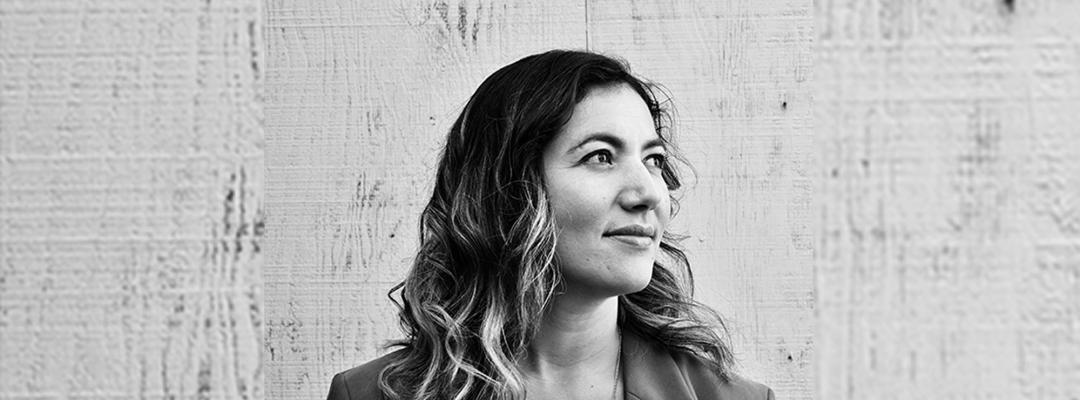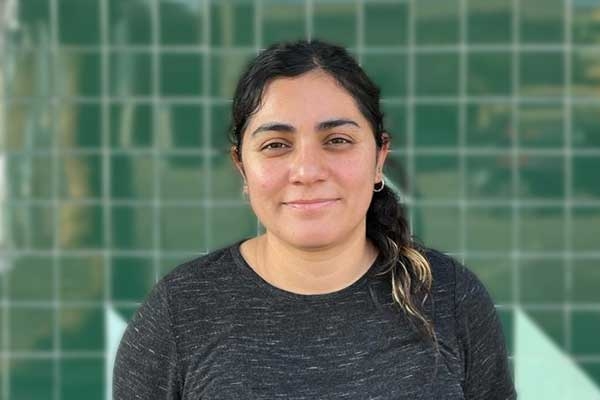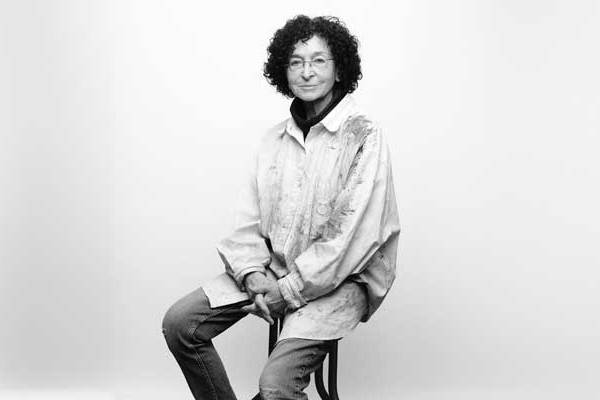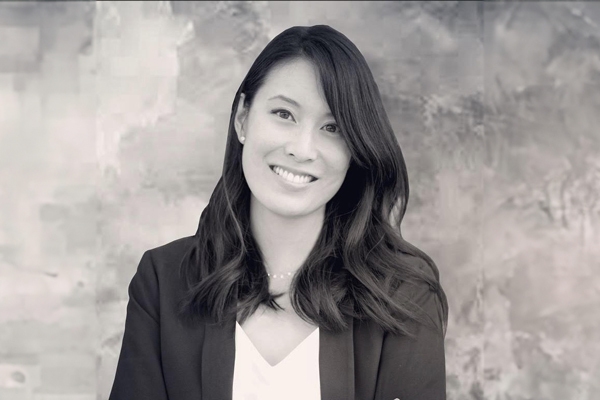Clara Azulay is no stranger to design.
She has a bachelors in design studies and graphic design from San José State University.
She has professional experience as a designer at TechSoup Global, Azulay Design, Williams-Sonoma and DriversEd.com.
But, her career swerve into quality assurance at Adobe XD put her on a new path. There, one of the engineers with whom she worked was taking our Diagramming and Prototyping for UX class. After Clara had confided that she wanted to keep her design skills up to date, he suggested that she look into the program.
She was not a complete novice to UX, especially with her design experience that included a lot of "mobile first" creativity. Designing for mobile and tablets does require thinking about the end user and how he/she accesses content on different platforms.
So when she took the plunge with Introduction to UX Design, all of the pieces fell into place.
"It was kind of a click," she shares. "I really want to get into this. I love the idea of understanding how people think and act, and then design based on their behavior.
“For me, it was super important to get the education and get the projects in my portfolio."
Clara talks about her experience in our Professional Program in User Experience (UX) Design and shares the steps she took before and after to get her to her current level of success—a UI designer for Google Maps.
Step 1: Instructors Are Fundamental
She loved instructor Matthew Moore in that first class and continued to talk with him and other instructors as she moved quickly through the program.
"Matthew was fundamental to me in continuing on with the program," she recalls. "He made Introduction to UX Design so fun and achievable. He helped me believe that I could learn, that I would succeed with the program. Also, his ability to teach—in just 11 weeks—the basic yet most important and complex parts of the UX design process impressed me.
"Staying connected with him along the program was fundamental," Clara continues, "because he continued giving me feedback on my projects, then on my portfolio. It's very helpful to have an experienced designer showing you what hiring managers are looking for when they look to hire a new designer."
In fact, Clara stresses that this is one of the key features of our program.
"One of the most important things is to make those connections," she insists. "Instructors are the ones in the field. They're the best ones to bring you up to date. When you are in school, it's that little bubble—you can just imagine how things are in the real world. But once you go into the real world, being able to continue the conversation with your instructors as you go through the process of getting hired, it's super important to get their support on those first couple of applications."
When pressed to name a favorite instructor, however, Clara laughs: "That's not fair!"
She does offer up some fervent opinions! "Manny Darden is the one who challenged me the most. He took the time out of his weekend to meet with us and talk about the User-Interface (UI) Design final project. He put in so much effort with us."
Moved, Clara continues, "I felt that the only thing I had to do was give as much as he did and really try my best. His final project was the most challenging, for sure, and the one I was most proud of."
Other instructors also come in for praise.
"Sarah Gregory taught User Research for UX. She's incredible!" Clara enthuses. "She knows her work so well. I learned so much from her about listening to people, then designing for them and not the other way around."
"Rakesh Patwari is also incredible," Clara laughs, "a very knowledgeable designer who was able to teach the complexities of informational architecture in a simple and fun way."
Step 2: Building Relationships Is Key
Clara’s instructors in the program also served as mentors. It's one of the points that she returns to again and again.
"That's the thing," she says. "When you create relationships with instructors, you benefit. Salesforce used to have mentorship nights. Instructors brought that knowledge to us and came with us. All of these interactions are very important for you to really come into the community of UX and embrace it. That is very, very important."
Clara adds, "while it may not be not as easy to make connections as before, there are even more online design events available and very affordable to everyone."
Clara also built a productive professional relationship with program director Ivan Trujillo.
"I emailed him from day one," she recalls. "He was very helpful during the whole process. He guided me on the best order to take the courses. He was fundamental by offering the best way to take full advantage of all of the classes."
Clara remembers when Ivan brought in a recruiter from The Creative Group.
"It was a great night," she says with a smile. "You're face-to-face with the recruiters and get to know what they're looking for. It's important to continue the relationship. I went to their LinkedIn profiles and liked their posts. Make yourself present."
Step 3: Connect With Your Fellow Students
Sure, instructors are working professionals, but Clara also found amazing support from her fellow students. It's an important feature of the program, because they provide ongoing support. During breaks in class, they were always chatting and catching up, both about the course and their everyday lives.
Clara keeps up with some of her cohort to this day. They share news about job openings. She also insists, "it's important to connect with your fellow students even when the classes are online. Chat with them on breaks!"
Clara asked me to be sure to credit fellow student Lini Bustos Linares, who took the beautiful black-and-white portrait that we used as the banner for this profile.
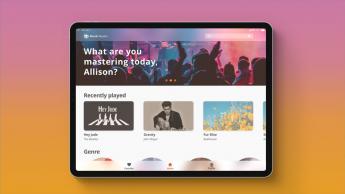
During our conversation, Clara gained even more animation as she thought about her project teams. It's clear that she had a great time and is very proud of the resulting product.
"The idea started that we wanted to do a project that was related to education and accessibility," Clara says. "After the team brainstormed some ideas, the one that got more votes from the class was to create an app that teaches people with dyslexia how to read music sheets. Later, we found out that someone in our group was dyslexic and played music. We worked really well together because we were all highly committed to make the best of that project. Regardless of some opposing opinions, we were always able to agree on what would be best for the group project."
Step 4: Focus on Your Portfolio
Instructor Olia Birulia taught Clara how to present her work, which is an important and often neglected part of landing a job.
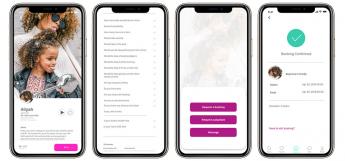
"She taught us how to interview," Clara says as she ticks off the skills she learned. "What kind of questions to ask and how to present your work."
Clara feels strongly about the importance of the UX Design Portfolio course. Each class, of course, students add to their portfolio with the final projects they turn in. The portfolio class, however, gives you the opportunity to look at the projects as part of a whole, and develop strategies to discuss project elements when you are interviewing for UX jobs.
One of the highlights of the portfolio class is Portfolio Review day, when about 10 industry designers volunteer to give feedback on student work. It's an important experience because students can have a 1:1 with working professionals who will honestly suggest how you can improve and make your portfolio more competitive once you are out in the market for a job. "It helped me so much on crafting my portfolio," Clara says, "and resulted in me shortening some of my project descriptions and adding more visuals."
Adding It Up
It was earlier in 2020, and Clara was finishing up the program. Her QA contract with Adobe was coming to a close. She admits to "freaking out" a bit, but calmed herself with the knowledge that she had a portfolio ready.
"It's really helpful to have people guiding you," she shares, "how you apply or where you apply. So I started talking with everybody and getting my résumé out there.
"A former co-worker helped get my résumé in front of her executive creative director at Digitas North America, and I started that following Monday."
Here, she was working as a lead user-experience designer and was soon working on a big project for Amway with scores of other designers.
"It was the first time I was designing an entire purchasing experience for a large e-commerce company," she recalls. "All my projects at Digitas were much more meticulous than anything I had ever done in a 11-week class. You had to not only be pixel-perfect but also work at a much faster pace. That was a huge learning curve for me because, suddenly, you have 100 art boards and the stakes are higher."
Still, Clara had learned what she needed from the program. "It was really nice to be able to suggest things based on what I learned in class."
As the project end date came to pass, Clara realized that she had to dust off the portfolio once again. Her experience, talents, connections and portfolio drew the attention of a recruiter who mentioned that there was a job available at Google.
"Am I going to say no?" Clara asks with a smile. She sent them her résumé and links to her portfolio. She responded to a questionnaire. Then, they asked for a Google Meet interview. After that went well, she had an hour-long interview to go over her portfolio. Well, you already know that she got the job!
"If I hadn't taken the certificate, I would never have had those projects in my portfolio. I would never have learned about user journeys or prototyping or user research or information architecture."
Clara is blunt about the program's effect on her career aspirations. "The program was absolutely fundamental to getting my job."
Hear From Clara!
Step 5: Paying It Forward
Clara has clearly gotten off to a great start in her UX/UI career, but she has some real-world wisdom to impart also. As soon as she decided on UX design, she launched into the program and completed it in one year. This is impressive on its face, but she also did this demanding course of study while working full time and raising a young child!
Clearly, she has a great story to tell and hopefully she will serve as an inspiration to others who are thinking of changing careers.
Clara still has dreams, of course, being relatively at the beginning of her UI/UX career.
She wants to give back—perhaps teaching to pass along the knowledge that she has learned and will continue to learn along her career path.
Clara aspires to create a community of women designers—particularly one for Latinas. This community for talented designers would allow them to share their experiences and encourage others to enter and excel in the field, just as Clara Azulay has done.
We're looking forward to hearing more from this successful graduate in the future!
Bring your talents to a new UX/UI career with our part-time and full-time programs.
